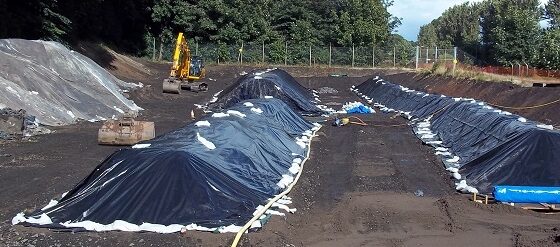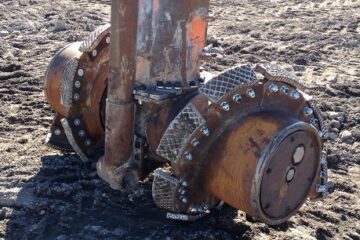Big toys help!
The video below shows us ‘turning’ contaminated soils, first we added moisture and nutrients, then we put all of the soils through the Allu bucket to aerate and mix the soils. Why? Read on.
Before bioremediation is started a few aspects must be considered. To start with, the contaminant must be ‘right’, i.e. biodegradable which generally means lighter-end hydrocarbons generally in the range of lube oils to petrols. The soil must be ‘right’ for the process, not toxic enough to limit the process. Toxic contaminants are most often PAHs, and sometimes metals which are present in concentrations which limit / prevent microbes from functioning.
The principle of the process is that organic compounds are broken down naturally in the environment by degrading microbes. Bioremediation is the process of accelerating the natural process by stimulating the growth of these degrading microbes. Stimulating microbes is generally done by controlling some / all of the following-
- Oxygen concentration (the higher the better)
- Carbon dioxide concentration (the lower the better)
- Temperature (the higher the better)
- Nutrient concentrations (balanced)
- Moisture content (balanced)
- Microbe types (e.g. introducing hydrocarbon specific degrading microbes)
- Microbe number (whilst the above stimulates growth, we often need to add more to boost the process.)
Our blog on ‘What is Bioremediation’ may answer a few more questions, and our web-site quite a few more. If you’d prefer to quiz us then feel free at the usual contacts info@soilutions.co.uk and 0131 538 8456.
2021
Soil remediation guide
Approaching soil remediation without any prior knowledge can be difficult and uncomfortable at times, especially when it can potentially be very costly. This free eBook will help you understand the whats, the whys and the hows of soil remediation in the simplest terms.







Leave a Reply